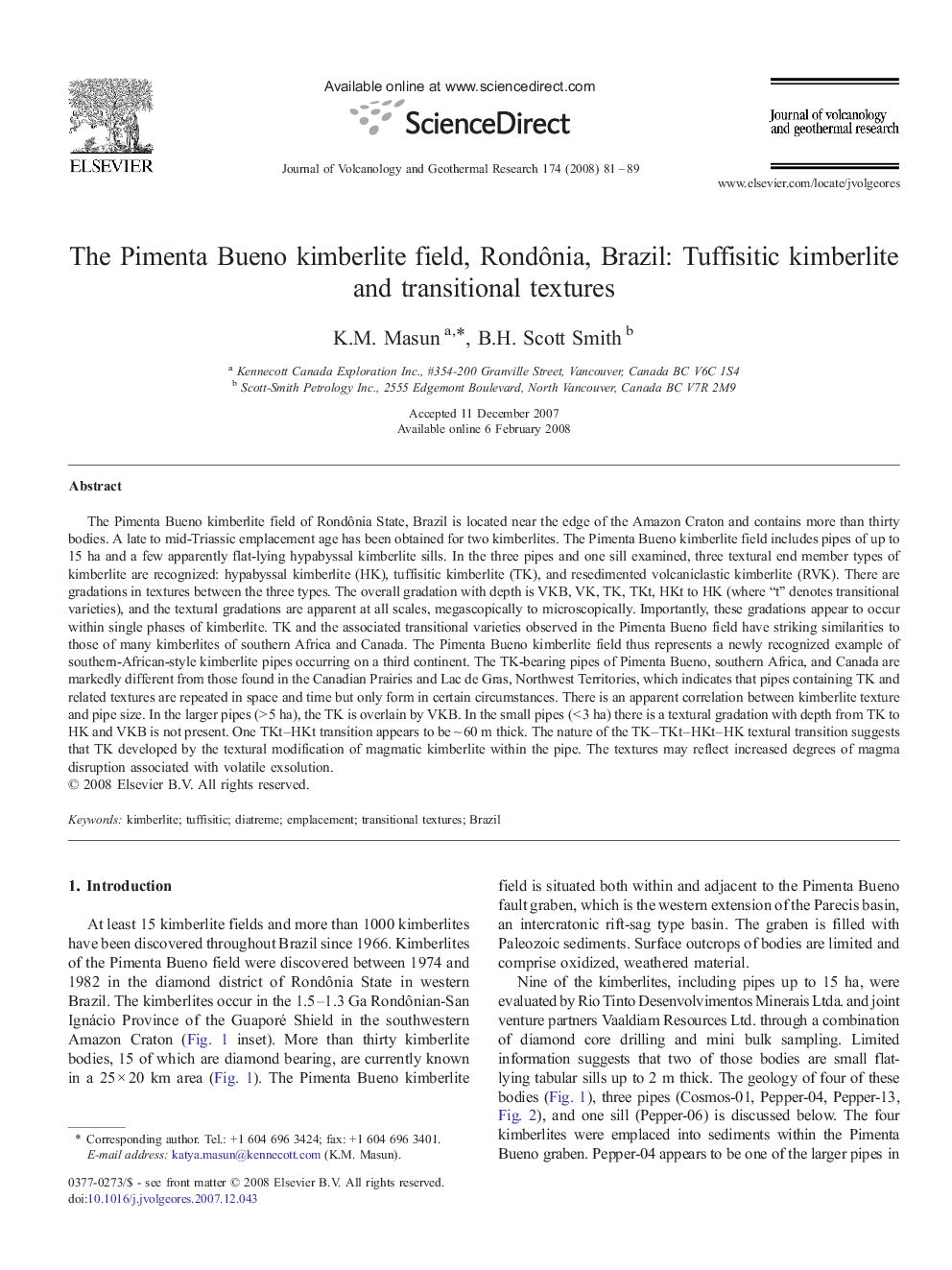| Article ID | Journal | Published Year | Pages | File Type |
|---|---|---|---|---|
| 4714765 | Journal of Volcanology and Geothermal Research | 2008 | 9 Pages |
The Pimenta Bueno kimberlite field of Rondônia State, Brazil is located near the edge of the Amazon Craton and contains more than thirty bodies. A late to mid-Triassic emplacement age has been obtained for two kimberlites. The Pimenta Bueno kimberlite field includes pipes of up to 15 ha and a few apparently flat-lying hypabyssal kimberlite sills. In the three pipes and one sill examined, three textural end member types of kimberlite are recognized: hypabyssal kimberlite (HK), tuffisitic kimberlite (TK), and resedimented volcaniclastic kimberlite (RVK). There are gradations in textures between the three types. The overall gradation with depth is VKB, VK, TK, TKt, HKt to HK (where “t” denotes transitional varieties), and the textural gradations are apparent at all scales, megascopically to microscopically. Importantly, these gradations appear to occur within single phases of kimberlite. TK and the associated transitional varieties observed in the Pimenta Bueno field have striking similarities to those of many kimberlites of southern Africa and Canada. The Pimenta Bueno kimberlite field thus represents a newly recognized example of southern-African-style kimberlite pipes occurring on a third continent. The TK-bearing pipes of Pimenta Bueno, southern Africa, and Canada are markedly different from those found in the Canadian Prairies and Lac de Gras, Northwest Territories, which indicates that pipes containing TK and related textures are repeated in space and time but only form in certain circumstances. There is an apparent correlation between kimberlite texture and pipe size. In the larger pipes (> 5 ha), the TK is overlain by VKB. In the small pipes (< 3 ha) there is a textural gradation with depth from TK to HK and VKB is not present. One TKt–HKt transition appears to be ~ 60 m thick. The nature of the TK–TKt–HKt–HK textural transition suggests that TK developed by the textural modification of magmatic kimberlite within the pipe. The textures may reflect increased degrees of magma disruption associated with volatile exsolution.
